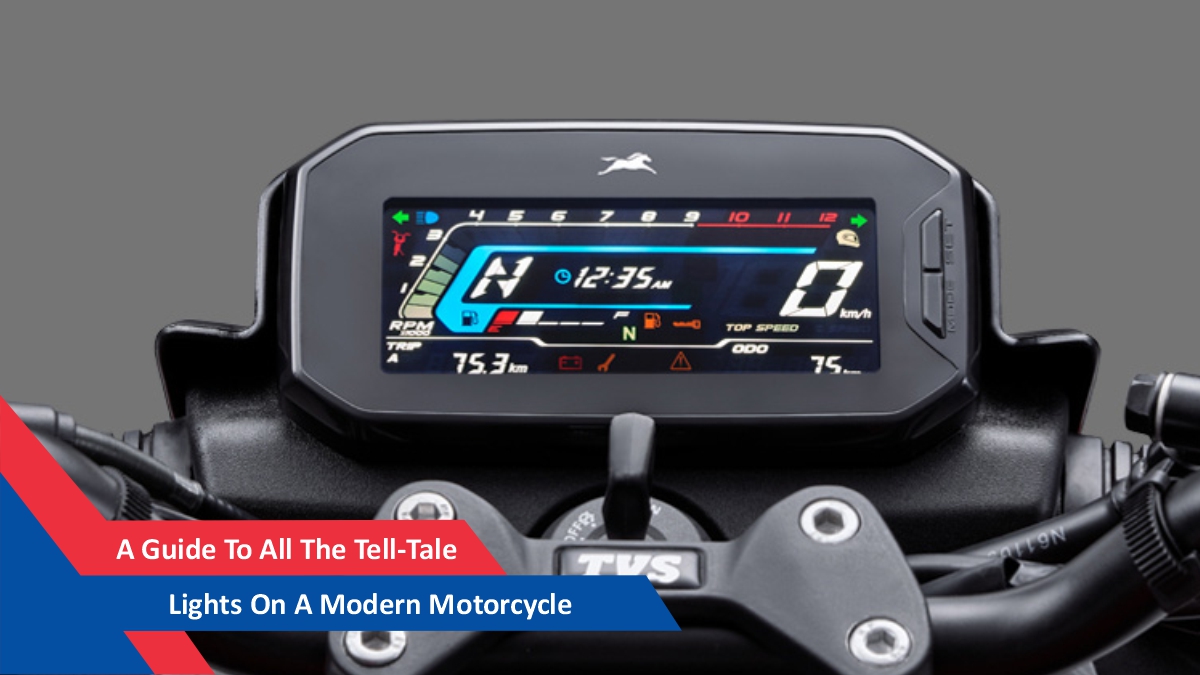The oil light means there is an issue with the car’s oil pressure. When the oil light turns on, it indicates a potential problem with the oil pump or a low oil level, which can result in engine damage if not addressed promptly.
Ensuring the oil level is adequate and checking for any leaks will help prevent further damage to the engine. Regular oil changes and maintenance can also help avoid potential issues with oil pressure. Remember to always consult a professional mechanic for proper diagnosis and repair.

Credit: www.kbb.com
Understanding The Oil Light
The oil light on your car’s dashboard indicates low oil pressure, which can lead to engine damage. When this light comes on, it is essential to check the oil level and quality immediately to avoid potential issues. Ignoring the oil light can result in costly repairs, so it’s crucial to address the problem promptly.
Understanding the Oil Light The oil light is a crucial indicator in your vehicle that should never be ignored. It serves as a warning sign that there may be an issue with your engine oil. Ignoring this warning can result in serious damage to your engine and costly repairs. In this section, we will delve into what the oil light indicates and why it is important to pay attention to it.What The Oil Light Indicates
The oil light is designed to alert you when the oil pressure in your engine falls below the recommended level. It typically appears as a simple oil can symbol on your dashboard. When this light illuminates, it signifies that the oil pressure is too low, which can have detrimental effects on your engine’s performance. There are several reasons the oil light may turn on. One common cause is a low oil level. This can be due to a leak or simply needing an oil change. Another possible reason is a malfunctioning oil pump, which is responsible for circulating the oil throughout the engine. A blocked oil filter can also cause the oil light to illuminate, as it restricts the flow of oil.Why It’s Important To Pay Attention To The Oil Light
Paying close attention to the oil light is vital for the well-being of your vehicle. Ignoring it could lead to severe engine damage and potentially leave you stranded on the side of the road. Here are a few key reasons why you should take immediate action when the oil light comes on. 1. Prevent engine damage: The oil light indicates a decrease in oil pressure, which can result in inadequate lubrication of the engine’s moving parts. Without proper lubrication, these parts can rub against each other, causing friction, heat, and wear. Over time, this can lead to significant engine damage and even complete engine failure. 2. Avoid costly repairs: Resolving an oil-related issue promptly can save you from expensive repairs down the line. By addressing the problem as soon as the oil light appears, you may be able to avoid major engine repairs or even the need for a complete engine replacement. 3. Preserve fuel efficiency: A well-lubricated engine operates more efficiently, enhancing fuel economy. Ignoring the oil light can result in decreased fuel efficiency as the engine works harder due to inadequate lubrication. This, in turn, leads to increased fuel consumption and unnecessary expenses over time. 4. Prolong engine life: Regularly monitoring and addressing the oil light can help extend the life of your engine. By ensuring the engine receives proper lubrication, you provide an environment that promotes optimal performance and longevity. Remember, the oil light serves as an early warning system for potential engine problems. When it comes on, it’s crucial to take immediate action to diagnose and resolve the issue. By paying attention to the oil light, you can protect your engine, save money, and enjoy a smooth and efficient driving experience. So, be attentive to your oil light and take necessary actions whenever it illuminates to keep your engine running smoothly for years to come.
Credit: www.tvsmotor.com
Causes Of Oil Light Activation
Understanding the causes of oil light activation is crucial in avoiding potential engine damage and ensuring the proper functioning of your vehicle. The oil light serves as a warning that something may be wrong with your engine’s oil system. In this section, we will explore the two most common causes of oil light activation: low oil level and oil pressure issues.
Low Oil Level
One of the primary reasons why the oil light turns on is due to a low oil level in your engine. The oil in your vehicle acts as a lubricant, helping to reduce friction and heat. This ensures that all moving parts function properly and prevents excessive wear and tear. However, if the oil level is too low, there may not be enough lubrication, leading to increased friction and potential damage to the engine components.
To check the oil level, locate the dipstick, which is usually located near the engine. Pull the dipstick out, wipe it clean, and reinsert it. Then, take it out again and observe the oil level. If the oil is below the recommended level, it is essential to add more oil as soon as possible. By regularly checking and maintaining the oil level, you can prevent the oil light from activating and protect your engine from unnecessary damage.
Oil Pressure Issues
Another cause of oil light activation is oil pressure issues. Oil pressure is essential for ensuring that the oil circulates throughout the engine properly. It helps to create a hydraulic seal, allowing the oil to flow through all the necessary parts of the engine. If there are any interruptions in the oil pressure, it can lead to inadequate lubrication and potential engine damage.
There are several factors that can contribute to oil pressure issues, such as a faulty oil pump, clogged oil filter, or worn-out engine bearings. It is crucial to address these issues promptly to prevent further damage to the engine. If you notice the oil light turning on and off or if it remains illuminated, it is essential to have your vehicle inspected by a qualified mechanic to diagnose and resolve any oil pressure problems.
In conclusion, the activation of the oil light can be alarming, but understanding the causes can help you take appropriate action to protect your engine. By regularly checking the oil level and addressing any oil pressure issues, you can ensure that your vehicle runs smoothly and avoid costly repairs in the future.
Consequences Of Ignoring The Oil Light
Ignoring the oil light in your vehicle can have serious consequences that may jeopardize both the performance and safety of your car. It is crucial to understand the potential risks associated with disregarding this warning indicator to ensure the longevity and functionality of your vehicle.
Engine Damage
Ignoring the oil light can lead to severe engine damage. Without proper lubrication from oil, the engine’s internal components can experience significant friction, leading to excessive heat and wear. This can result in costly repairs or even complete engine failure, rendering the vehicle inoperable. Addressing the oil light promptly is essential to prevent long-term damage to the engine, promoting its optimal performance and lifespan.
Potential Safety Hazards
In addition to the risk of engine damage, ignoring the oil light can pose potential safety hazards on the road. A lack of sufficient oil can lead to impaired engine function, potentially compromising the vehicle’s ability to respond effectively in emergency situations. This can endanger both the driver and passengers and jeopardize road safety for others. Addressing the oil light promptly is not only essential for the vehicle’s health but also for the safety of everyone on the road.

Credit: www.nutritiontactics.com
Tips For Responding To The Oil Light
When the oil light illuminates on your dashboard, it’s crucial to take immediate action to prevent potential engine damage. Here are some Tips for Responding to the Oil Light:
Checking Oil Levels Regularly
Regularly checking your oil levels is a simple yet vital maintenance task for your vehicle. Follow these steps to ensure your engine stays properly lubricated:
- Pop the hood of your vehicle and locate the oil dipstick.
- Remove the dipstick, wipe it clean, reinsert it, and then pull it out again to check the oil level.
- Monitor the oil level to ensure it falls within the recommended range on the dipstick.
Seeking Professional Help When Necessary
If the oil light persists or you suspect a more serious issue with your engine, it’s best to seek professional assistance. Here are some signs that indicate you need expert help:
- Continual oil light illumination even after topping up the oil.
- Strange engine noises or a burning smell.
- Oil leaks underneath your vehicle.
Conclusion And Maintenance
Oil light is an important indicator in your vehicle. Understanding what it means and taking necessary maintenance measures can prevent severe engine damage and costly repairs. Keep a regular check on your oil levels and get it serviced promptly to ensure optimal engine performance.
Importance Of Regular Vehicle Maintenance
Regular maintenance is key to keeping your car running smoothly. Checking your oil regularly can prevent engine damage.- Oil changes should be done every 3,000 to 5,000 miles.
- Avoid engine wear and tear by staying on top of maintenance.
Final Thoughts On Oil Light Awareness
When your oil light comes on, it’s a warning that should not be ignored. Being aware of this indicator can save you from costly repairs.- Immediate action is necessary if the oil light illuminates.
- Regularly check your oil level to avoid emergencies.
Frequently Asked Questions Of What Does Oil Light Mean
Is It Safe To Drive With Oil Light On?
Driving with the oil light on is not safe. It indicates low oil pressure, which can cause severe engine damage. Immediately stop driving, check the oil level, and top up if necessary. If the light stays on, consult a mechanic to diagnose and fix the problem before driving again.
How Much Oil Is Left When Oil Light Comes On?
When the oil light comes on, there may be around one to two quarts of oil left. It’s crucial to top up the oil immediately to prevent engine damage. Regularly check oil levels and address any oil light warnings promptly to maintain the health of your vehicle.
Why Is My Oil Light On But I Have Oil?
The oil light may be on due to low oil pressure, even if there’s enough oil. Check for leaks or a faulty oil pump.
Does The Oil Light Mean You Need An Oil Change?
The oil light indicates low oil pressure, not just need for a change. Check oil levels and quality immediately.
Conclusion
Understanding the oil light is crucial for maintaining your vehicle’s health. Ignoring it could lead to costly repairs. Regular oil changes and routine inspections can prevent the light from coming on. If the oil light appears, don’t hesitate to seek professional help to address the issue promptly.
Prioritize the oil light for a smooth and safe driving experience.
